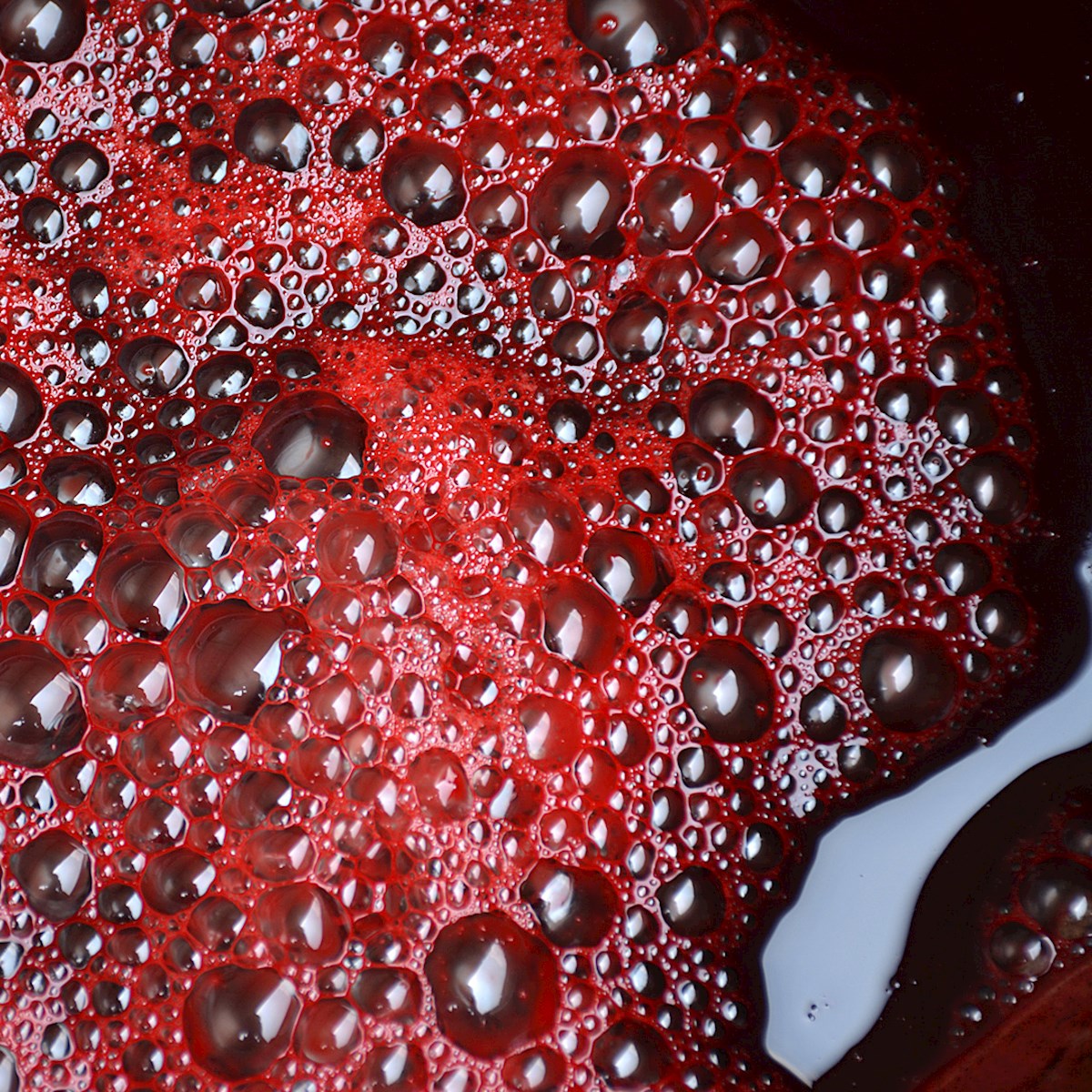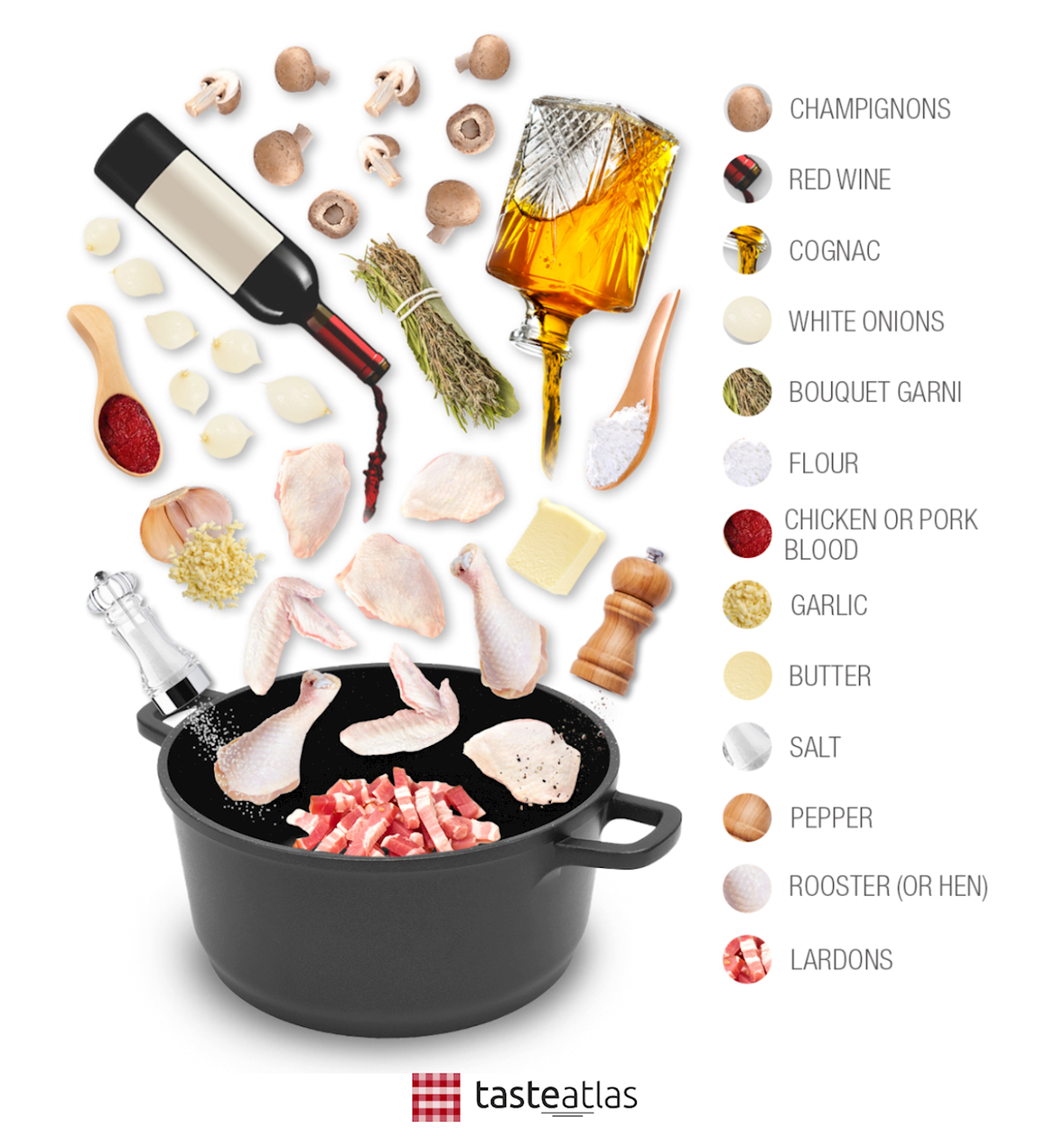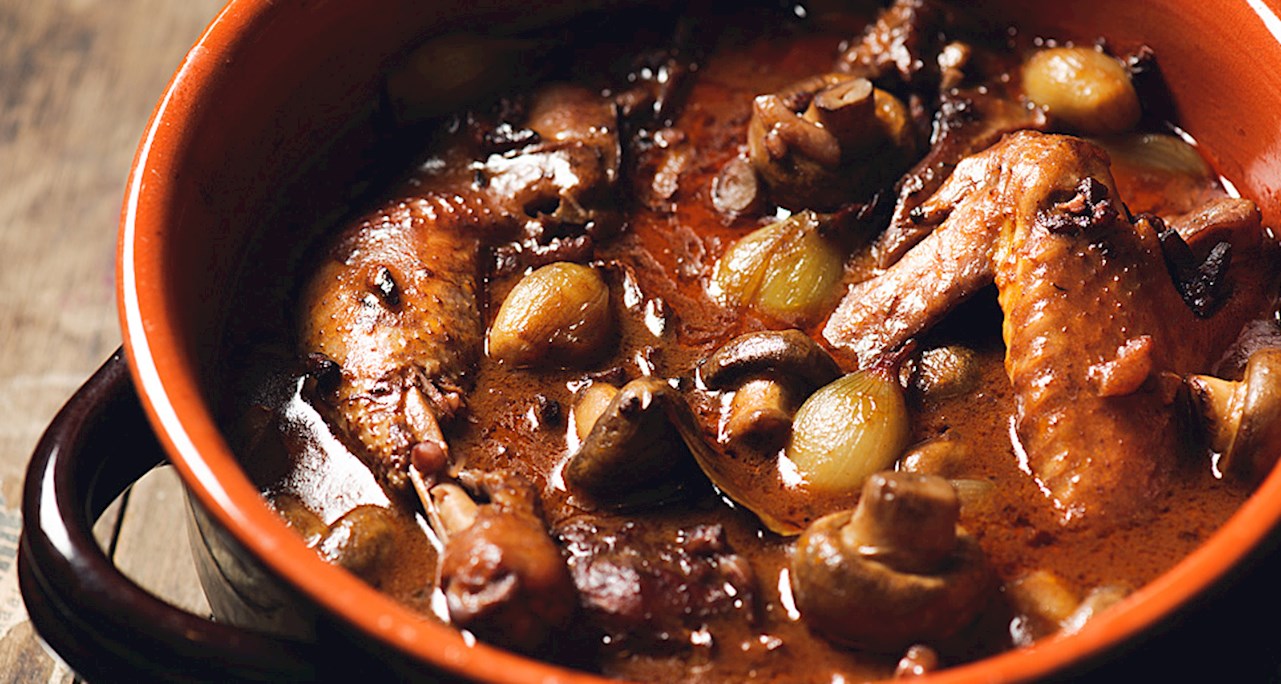Made famous in the 1960s by Julia Child, in the U.S. at least, coq au vin, the emblematic dish of French cuisine, has been around for much longer. Supposedly the stew predates the Gallic Wars and Julius Caesar.
 Small town in Burgundy region, France Credits: ourway_sca
Small town in Burgundy region, France Credits: ourway_sca
Now, before we reveal the mystery component, let's cover all the other components of the dish.
The mains - rooster and wine make for such a beautiful rhyme
To make the traditional coq au vin, you will need a rooster, an older bird whose gamey meat benefits from long braising and, as a result, releases lots of flavor and gelatine that thickens the sauce and makes it velvety.
 Credits: Shutterstock
Credits: Shutterstock
When it comes to wine, the traditional choice is red Burgundy. Still, regional variations exist. For example, in the Jura region, they use vin jaune, a type of oxidized white wine; in Alsace, they use Riesling, and Champagne is used in the namesake Champagne region.
 Burgundy wineyards Credits: Shutterstock
Burgundy wineyards Credits: Shutterstock
The supporting cast - lardons, onions, and mushrooms
Lardons, onions, and mushrooms are typically cooked separately. To avoid overcooking, they are usually added at the very end or once the dish is already cooked. In addition, lardons might be blanched beforehand to remove the excess salt and smokiness.
Now, let's get saucy
Finally, for the mystery ingredient. It's not some exotic, hard-to-find ingredient; it's not an expensive one either. It's a simple, age-old one, nearly extinct from contemporary recipes.
Want a clue? Here's one. It comes from the rooster itself.
Yes, it's rooster blood, and it's used to thicken the sauce at the end, once the stew is nearly done. Pig, duck, or goose blood are all acceptable alternatives.
 Credits: Shutterstock
Credits: Shutterstock
See, unlike more typical thickeners like flour and roux, blood doesn't need to be cooked out and gives the dish a mineral note. Plus, its use hails from times when nothing was allowed to go to waste. Coq a vin is a peasant dish, after all.
However, it needs to be stabilized with brandy and/or vinegar to prevent it from going gritty.
 Credits: TasteAtlas
Credits: TasteAtlas
So, if you'd like to get more scoop on the dish and maybe try one of our recipes, click on the link below:




